Washington University School of Medicine was established in 1891 when the St. Louis Medical College became the medical department of Washington University. When Missouri Medical College joined the department in 1899, the school’s department of obstetrics was founded, with Dr. Henry Schwarz serving as its first head.
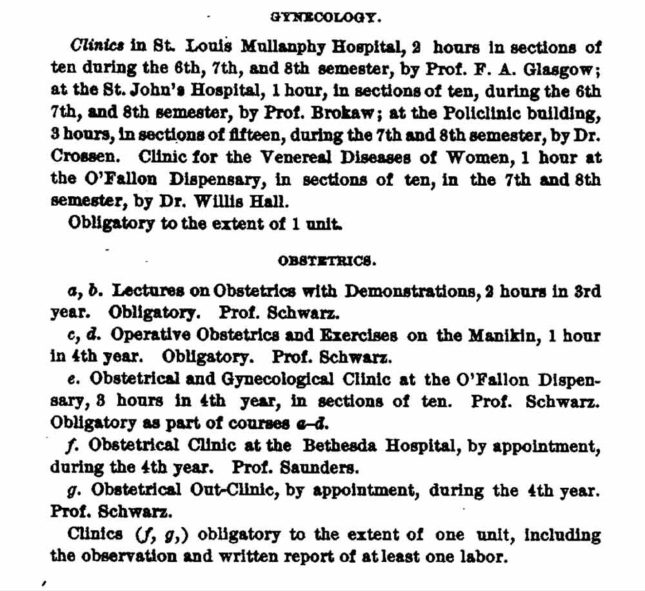
In 1921, gynecologic surgery was restructured as a division with the Department of Surgery, but it recombined with obstetrics in July of 1929, forming an independent Department of Obstetrics and Gynecology.
Dr. Otto Schwarz, son of Henry Schwarz, became the newly combined ob/gyn department’s first full-time chair. A master clinician, on retiring from academic medicine in 1940 he rejoined the clinical staff to continue research and practice.
Department chairs
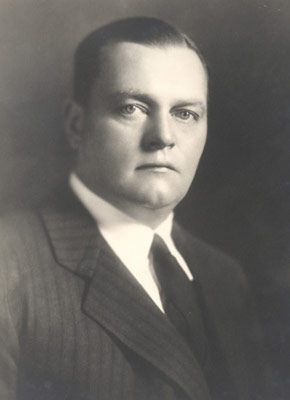
Photo: Becker Medical Library
In its 120-year history, the department has had 9 chairs.
- Henry Schwarz 1899-1928
- Otto Henry Schwarz 1928-1940
- Willard Allen 1940-1971
- James Warren 1971-1989
- Marvin Camel 1989-1991
- James Schreiber 1991-2005
- George Macones 2005-2019
- Michael Nelson (Interim chair) 2019-2020
- Dineo Khabele 2020-present
Hospital affiliations
The formation of an independent ob/gyn department at Washington University coincided with the 1928 opening of an eight-story building on Kingshighway Boulevard (now Barnes-Jewish Hospital Plaza).
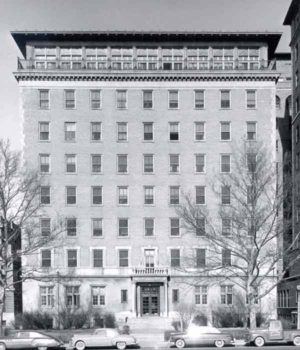
The building was home to the St. Louis Maternity Hospital, a non-sectarian hospital founded in May of 1908 and a new teaching hospital of Washington University at the time of construction. The hospital ceased operations in 1972 when maternity care was moved to the adjacent Barnes Hospital, but up until 2018 the building continued to house many of our department’s academic and administrative offices. The department has since moved to the Center for Outpatient Health, and provides its services at the Women & Infants Center in the Barnes-Jewish Hospital Parkview Tower.
In fact, during its first years of operation, Washington University School of Medicine was affiliated with several clinical organizations throughout St. Louis. However, as the university took action under board president Robert S. Brookings to develop the medical program into one of the finest in the nation, the sites of medical education, care and research converged. When the medical complex was dedicated in April of 1915, the activities of Washington University Hospital transferred to Barnes Hospital and St. Louis Children’s Hospital, which continue as our primary teaching hospitals today.
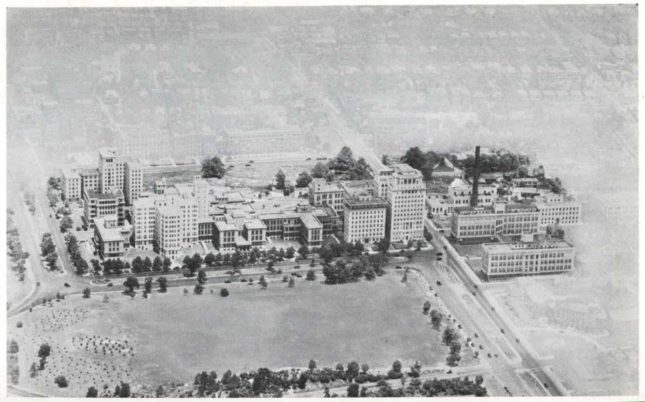
1910: The medical school enters into an agreement with Barnes Hospital, which still was in its planning stages, to establish Barnes as a teaching hospital of Washington University.
1914: Upon the bequest of Robert A. Barnes, Barnes Hospital opens on the site of its current location in December. Two days later, a baby girl – the hospital’s first delivery – is born.
1927: Jewish Hospital, founded by leaders of the St. Louis Jewish community in May of 1902, opens a new facility just blocks from Barnes Hospital at Kingshighway Boulevard and Parkview Place. The site is now the location of a women and infants facility.
1928: The St. Louis Maternity Hospital building opens adjacent to Barnes Hospital and becomes home to the obstetrics and gynecology department.
1965: Queeny Tower opens adjacent to Barnes Hospital on Kingshighway Boulevard. The 17-story building is designed to pioneer a whole person approach to patient care.
1972: The Barnes Hospital East Pavilion opens, joined in 1980 by the West Pavilion. Along with Queeny Tower, the pavilions today comprise Barnes-Jewish Hospital south.
1985: The first baby in Missouri conceived through in vitro fertilization (IVF) is born to parents treated in the Department of Ob/Gyn’s Assisted Reproductive Technologies (ART) Program.
1996: Barnes Hospital and Jewish Hospital merge to form Barnes-Jewish Hospital. The two hospitals had been affiliated since 1992, and in 1993 they were joined by Christian Health Services to form BJC HealthCare. (Today BJC is a consortium of more than a dozen healthcare providers, including Barnes-Jewish Hospital. The medical school’s teaching partnership is with Barnes-Jewish Hospital, rather than the entire BJC system.)
2013: Construction begins on a new facility to house the women and infants program. The center would be home to deliveries, post-partum care, and gynecologic surgeries.
The legacy of Masters and Johnson
In the mid-20th century, department faculty member William H. Masters and research associate Virginia Johnson embarked on a body of research that revolutionized the study of human sexuality and established therapies still in use today.
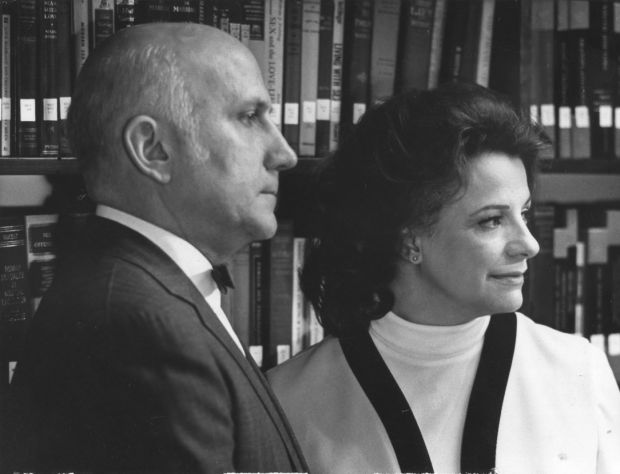
“People like to topple giants. But make no mistake about it, they were giants. They are major contributors to the field of sexuality and to people’s satisfaction and enjoyment of their sex lives.”
Dr. Shirley Zussman, trained by Masters and Johnson,
quoted in the New York Times
Scientifically analyzing the physiological changes that occur in the human body during arousal and sex, Masters and Johnson’s groundbreaking research resulted in the publication of books including “Human Sexual Response” (1966), “Human Sexual Inadequacy” (1970) and “The Pleasure Bond” (1975). Their work represented medicine’s first application of scientific methods to understanding human sexuality and treating sexual disorders.
Masters and Johnson would make it possible to reach a day when “human sexuality can be openly and freely taught to children and young people who need such insight so desperately, and to their parents, who need it even more.”
Mary Calderone, founder of Sexuality Information and Education Council of the United States (SIECUS)
Based on their findings, Masters and Johnson established the Reproductive Biology Research Foundation in 1964. In 1973 they became co-directors of the Masters and Johnson Institute, applying a model of assessment and treatment that integrated both physiological and psychosocial data. The institute closed upon Masters’s retirement in 1994, but the influence of Masters and Johnson lives on in fields as divergent as biology, obstetrics, economics and politics (not to mention a 2009 biography by Thomas Maier and Showtime popular television series by the same name, “Masters of Sex”).